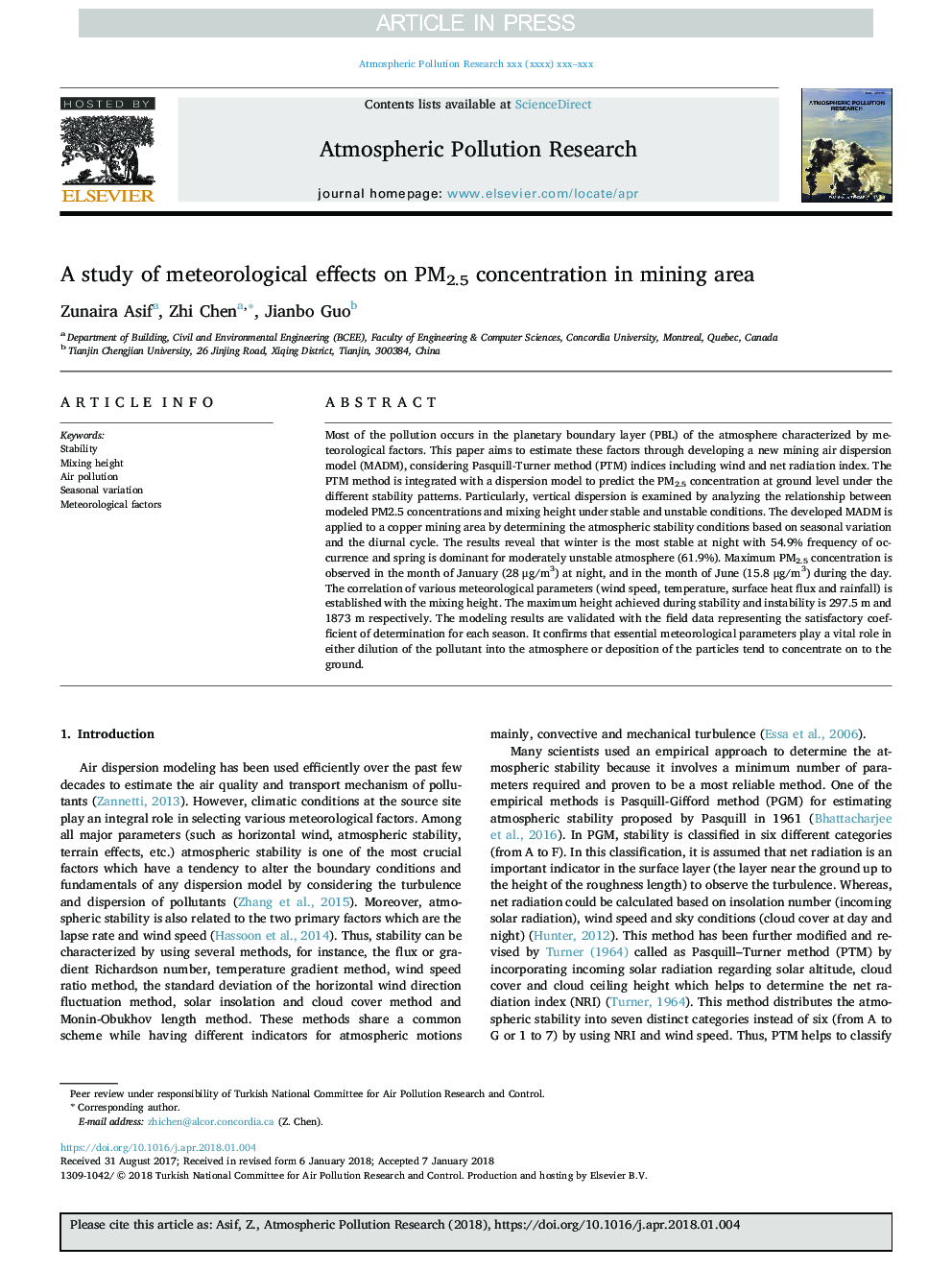| Article ID | Journal | Published Year | Pages | File Type |
|---|---|---|---|---|
| 8862614 | Atmospheric Pollution Research | 2018 | 9 Pages |
Abstract
Most of the pollution occurs in the planetary boundary layer (PBL) of the atmosphere characterized by meteorological factors. This paper aims to estimate these factors through developing a new mining air dispersion model (MADM), considering Pasquill-Turner method (PTM) indices including wind and net radiation index. The PTM method is integrated with a dispersion model to predict the PM2.5 concentration at ground level under the different stability patterns. Particularly, vertical dispersion is examined by analyzing the relationship between modeled PM2.5 concentrations and mixing height under stable and unstable conditions. The developed MADM is applied to a copper mining area by determining the atmospheric stability conditions based on seasonal variation and the diurnal cycle. The results reveal that winter is the most stable at night with 54.9% frequency of occurrence and spring is dominant for moderately unstable atmosphere (61.9%). Maximum PM2.5 concentration is observed in the month of January (28 μg/m3) at night, and in the month of June (15.8 μg/m3) during the day. The correlation of various meteorological parameters (wind speed, temperature, surface heat flux and rainfall) is established with the mixing height. The maximum height achieved during stability and instability is 297.5 m and 1873 m respectively. The modeling results are validated with the field data representing the satisfactory coefficient of determination for each season. It confirms that essential meteorological parameters play a vital role in either dilution of the pollutant into the atmosphere or deposition of the particles tend to concentrate on to the ground.
Related Topics
Physical Sciences and Engineering
Earth and Planetary Sciences
Atmospheric Science
Authors
Zunaira Asif, Zhi Chen, Jianbo Guo,
